In Łódź the “must see” is the renovated Piotrkowska Street – the main street breeding ground for restaurants, bars, pubs and other eating and entertainment venues where everyone will find something they like best. Just as Manufaktura, an entertainment, shopping, and cultural centre housed in renovated premises of one of the biggest factories in Lodz. In turn, in the palace adjacent to the factory, there is the Museum of the City of Lodz (Poznanski Palace), a perfect place to learn about history of the city and at the same time a palace residence with beautiful interiors.
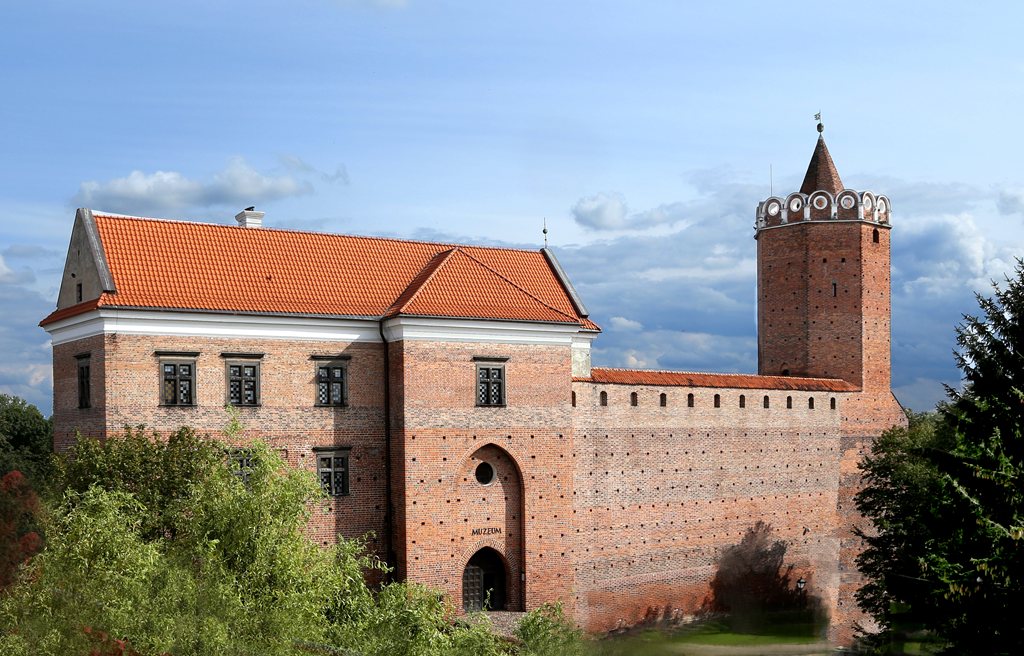
The list of attraction in Lodz was few years ago extended by the oldest municipal power plant, today Science and Technology Center EC1, a planetarium, the National Centre for Film Culture and the Comic and Interactive Narrative Center. In the end, there is yet another exceptional place to visit – the Jewish cemetery at Bracka Street. It is another site demonstrating the power of the 19th century Lodz.
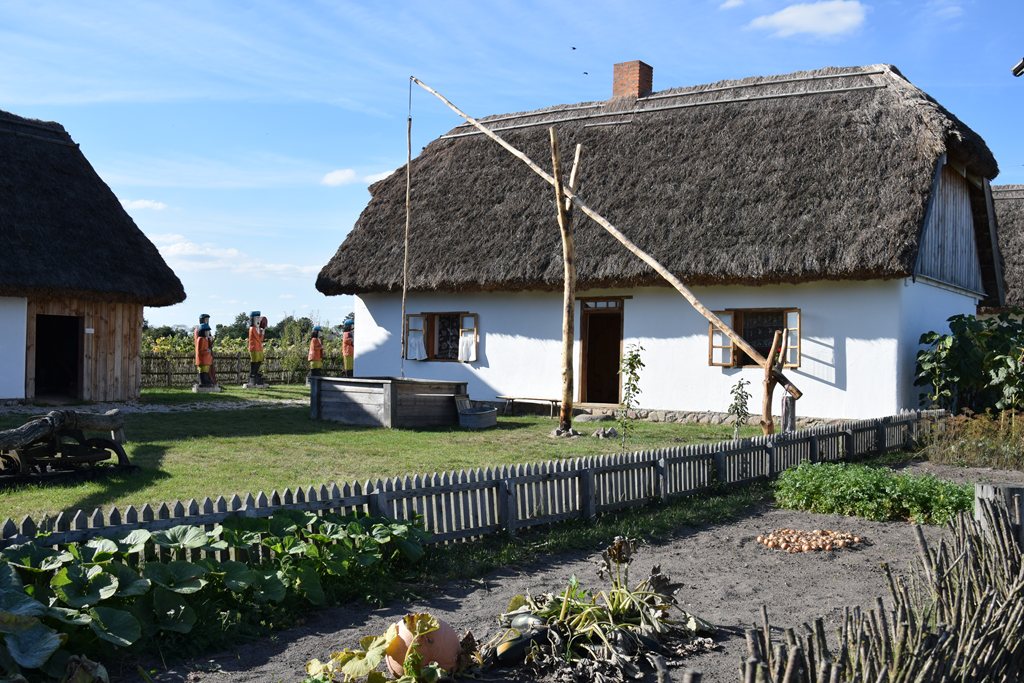
The Saxon Palace Museum in Kutno, built by order of Frederick Augustus III, is the most valuable and oldest monument of European significance in the city. In 2023, won an award in
a competition entitled “Modernisation of the Year & Construction of the 21st Century”, where it took third place overall and first place in the historic structures category. Today, it is the home of a modern museum. Its uniqueness is evidenced by the fact that it is the only secular monument preserved, from the times of the Polish-Saxon Union. In addition, the building is a combination of wooden architecture with features of a palace residence, combined with the function of a postal inn, built in the style of the so-called Dresden Baroque, which makes it unique in the country. The museum complex was awarded the title “Tourist Discovery of the Year 2024” in the competition for the “Best Tourist Product of the Lodzkie Region”.
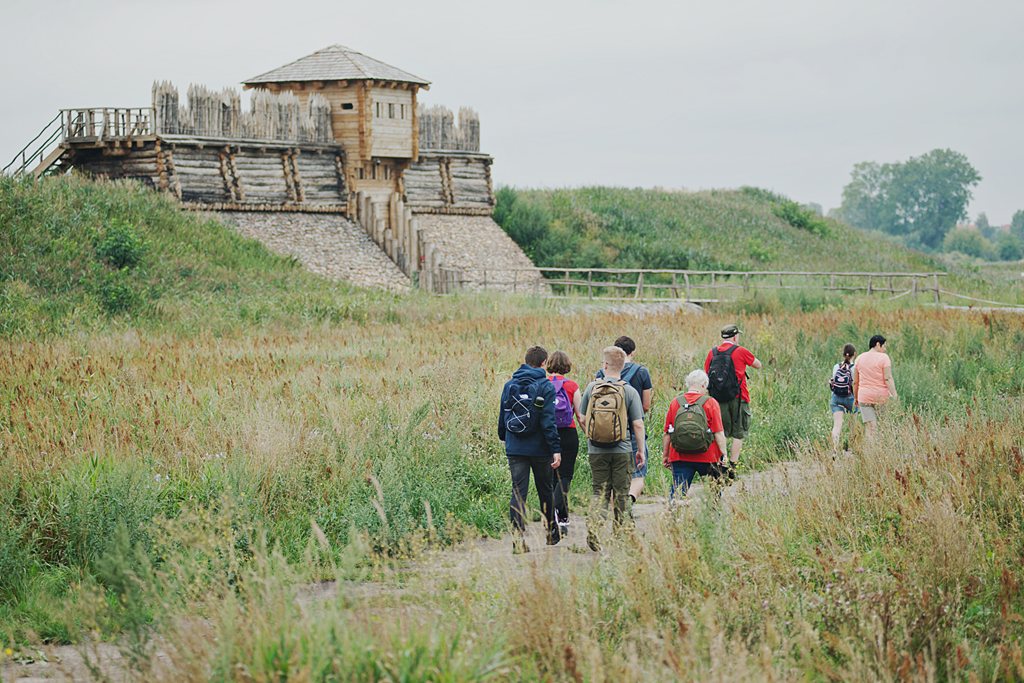
The mosaic of tourist assets of the Lodzkie region is magnificently complemented by castles, both those that have been preserved in all their splendour and those whose ruins are picturesquely incorporated into the landscape. Within the present boundaries of the region, over the centuries, there have been approx. 30 of such buildings. We particularly recommend visiting the Gothic Royal Castle in Łęczyca, built on the initiative of Casimir the Great, where the Museum in Łęczyca is now located. Among the exhibitions, there is a rich display showing the history of the castle, the Łęczyca land and the local folklore. It is here that you can admire the largest collection of sculptures in Poland depicting the devil Boruta — the legendary ruler of the castle. Every year at the end of August, the castle courtyard “comes alive”, becoming the setting for one of the largest knightly tournaments in the country. While in the vicinity of Łęczyca, you should visit the open-air ethnographic museum “Łęczycka Zagroda Chłopska” (“Łęczyca Farmstead”) in Kwiatkówek, which, together with the fortified settlement in Tum, was awarded a distinction in the competition for the “Best Tourist Product — Polish Tourist Organisation Certificate”. Both sites are valuable links between the Middle Ages and modern times.
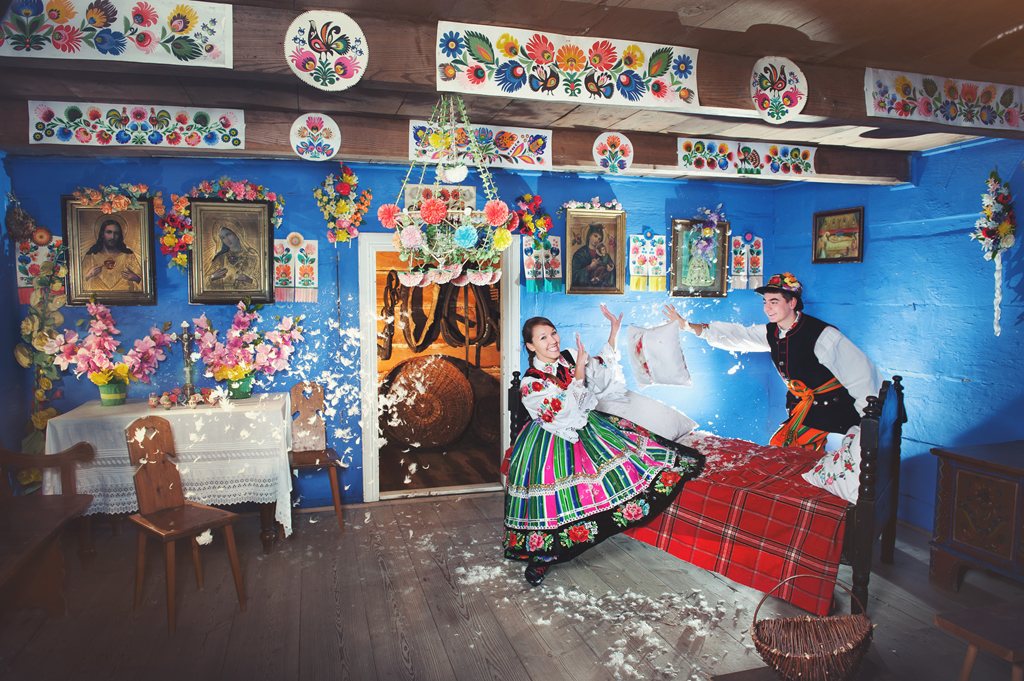
Our region boasts an exceptionally colourful folklore. Folklore ensembles and singing bands are thriving here. You can also admire the still-alive traditions of weaving, embroidery and paper-cutting. Łowicz is famous for its paper cut-outs, which can be seen in the local museum. In Lipce Reymontowskie, tourists like to attend a traditional village wedding from the 19th century, described by Władysław Reymont. It is also worth visiting Spycimierz during Corpus Christi when the villagers lay carpets of flowers. In 2021, this 200-year-old tradition was added to the UNESCO world list. Spała hosts the famous Presidential Harvest Festival, and the Antiques and Folk Handicraft Fair is held between April and October.
Despite being located in the centre of Poland, the lodzkie region has its own “mountain”. In the Przedborski Landscape Park, there is a natural hill — Fajna Ryba (347 m above sea level), which is the highest peak of the Przedborsko-Małogoski Range.
Załęczański Landscape Park, on the other hand, lies partly within the Silesian region, covering the eastern part of the Kraków-Częstochowa Upland. It thus plays an important role as the last northern link of the Jurassic landscape park system.
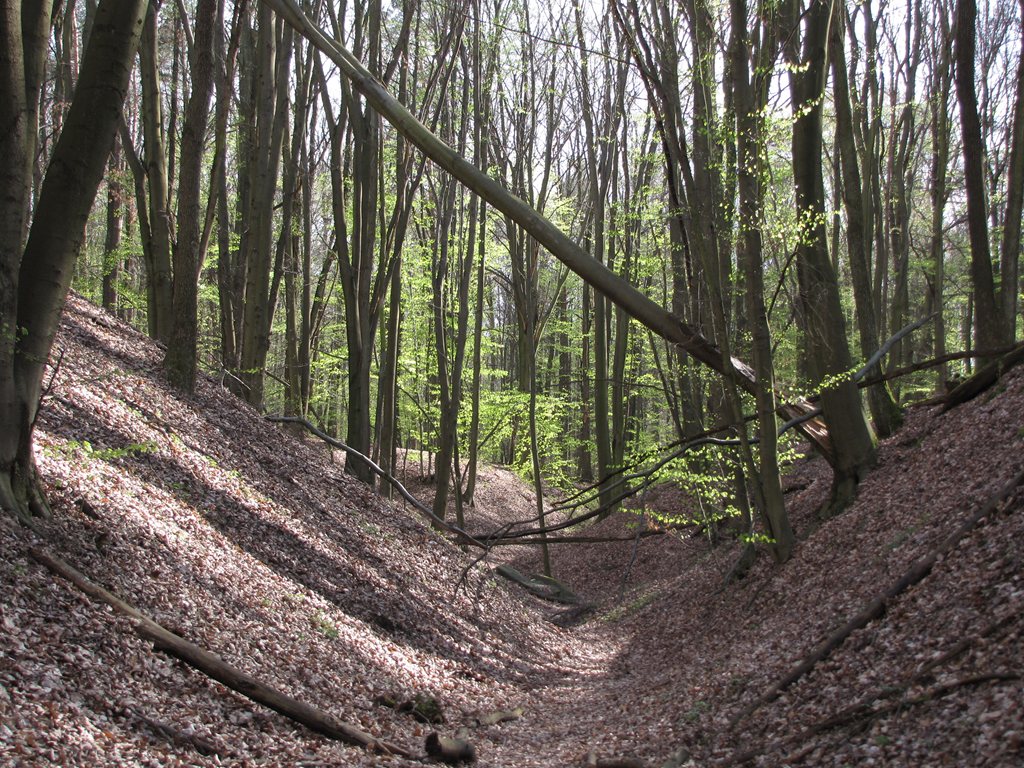
The youngest, the Łódź Heights Landscape Park, was established in 1996 to protect the varied post-glacial relief. It consists of two reserves: "Parowy Janinowskie", where slender beeches and branching gorges create scenery like from "The Lord of the Rings" and "Struga Dobieszkowska", from where it is only a stone's throw to the medieval stronghold in Stare Skoszewy. Want to wander along forest paths among ponds without leaving the city? Be sure to visit the “green lungs of Lodz” – The Łagiewnicki Forest, which is a part of the Lanscape Park.
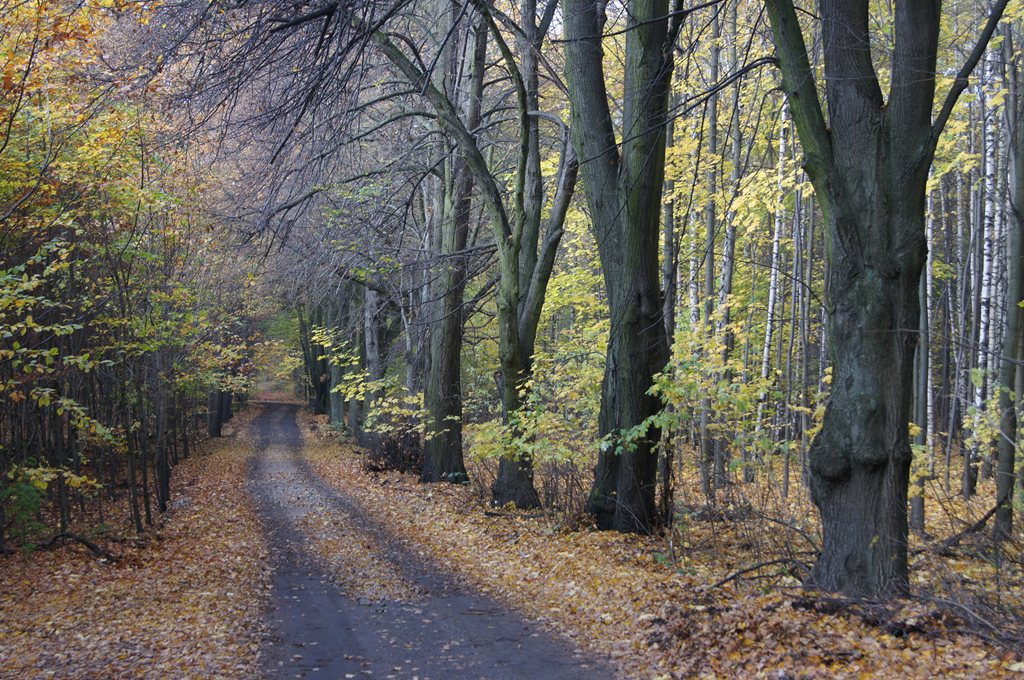
Spała Landscape Park - the remainder of the former Pilicka Forest growing there – two hundred year old oaks, hornbeams and pines – will arouse considerable enthusiasm among every dendrologist. These can be found primarily in the “Spała” reserve, as well as a curiosity of local nature – pines “on stilts”, created as a result of river erosion.
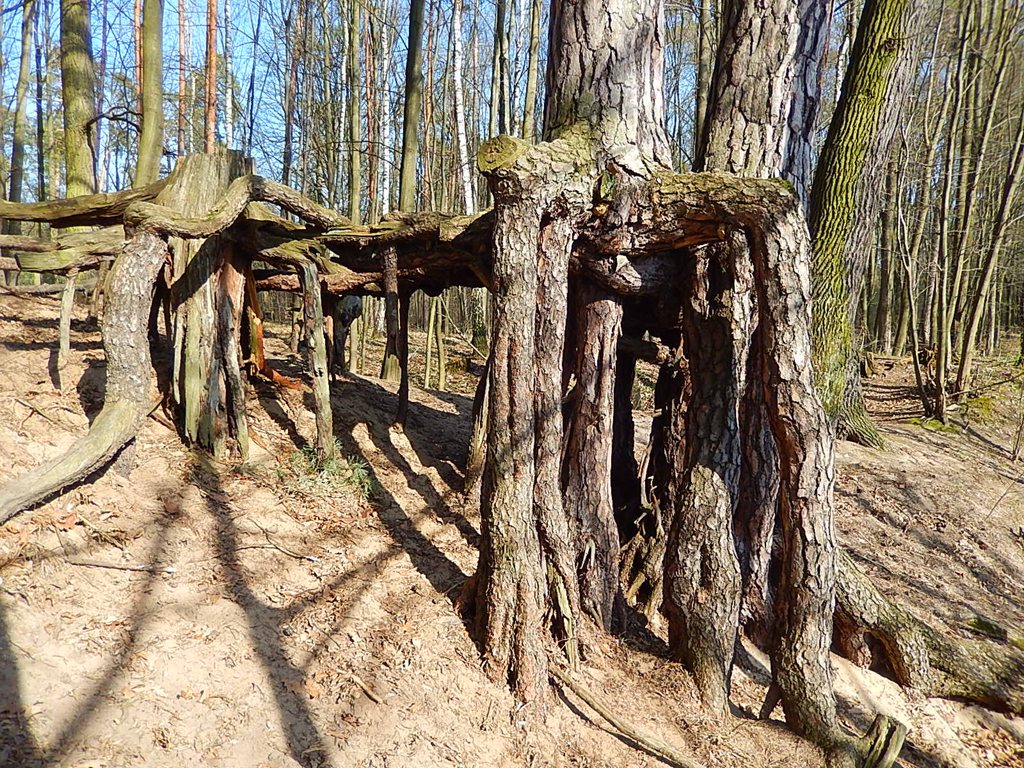
Sulejów Landscape Park - the Park area includes such magical places as the "Niebieskie Źródła" ("Blue Springs") reserve with its famous, azure water or the "Jabłoniowy Forest" reserve, where among the typical forest stands, we will find numerous specimens of wild fruit trees - apple trees, pears and hawthorns. If you prefer fauna more than flora, the Forest Animal Education and Rehabilitation Center in Koło is a must-see on the trip.
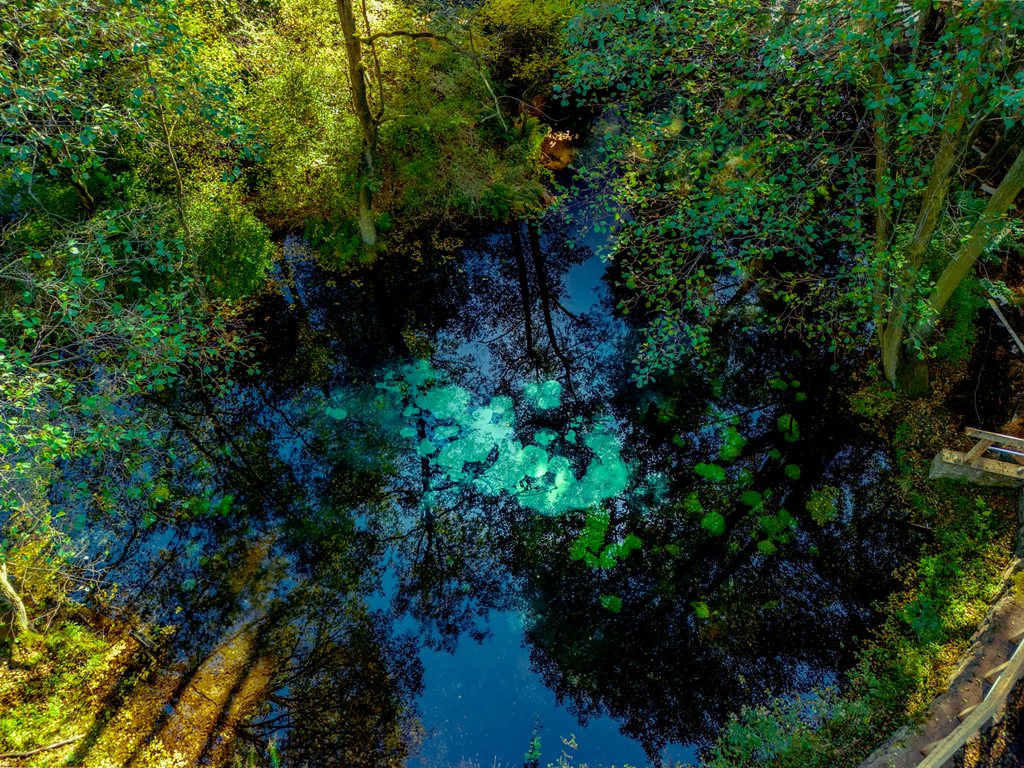
In The Warta Widawka Landscape Park the main role is played of course by rivers, especially the Warta, which is the undisputed queen of this area. Anyone who dreams of meeting cranes, marsh sandpipers and other birds associated with water should direct their steps here.

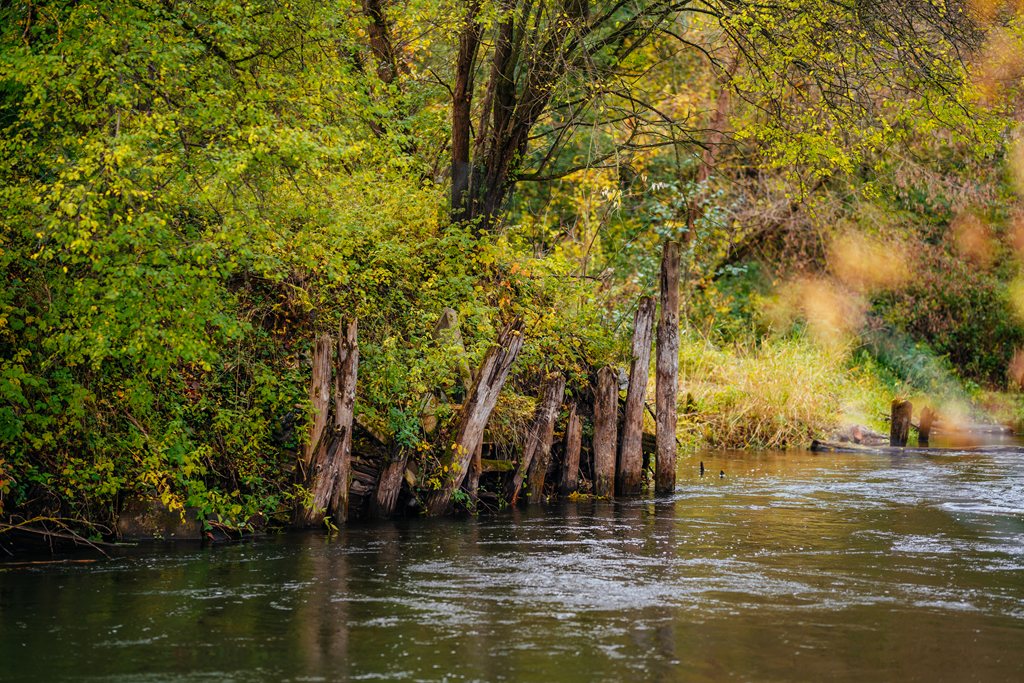
The Landscape Park Międzyrzecze Warty and Widawki, photograph D. Kwapisiewicz
The biggest secret of Bolimów Landscape Park (apart from the Rawka River) are the large (even up to several dozen hectares) forest clearings, which are the remains of the activities of budniks who cut down the forest in order to obtain potash, tar or charcoal. Today, the clearings are a real storehouse of the forest's biodiversity. Here we can find 1/3 of the plants occurring in this area, as well as animals - wetland birds, amphibians and large mammals. However, for both natural and safety reasons, entry to some of the clearings (such as Siwica) is only possible after prior notification with the Park employees.
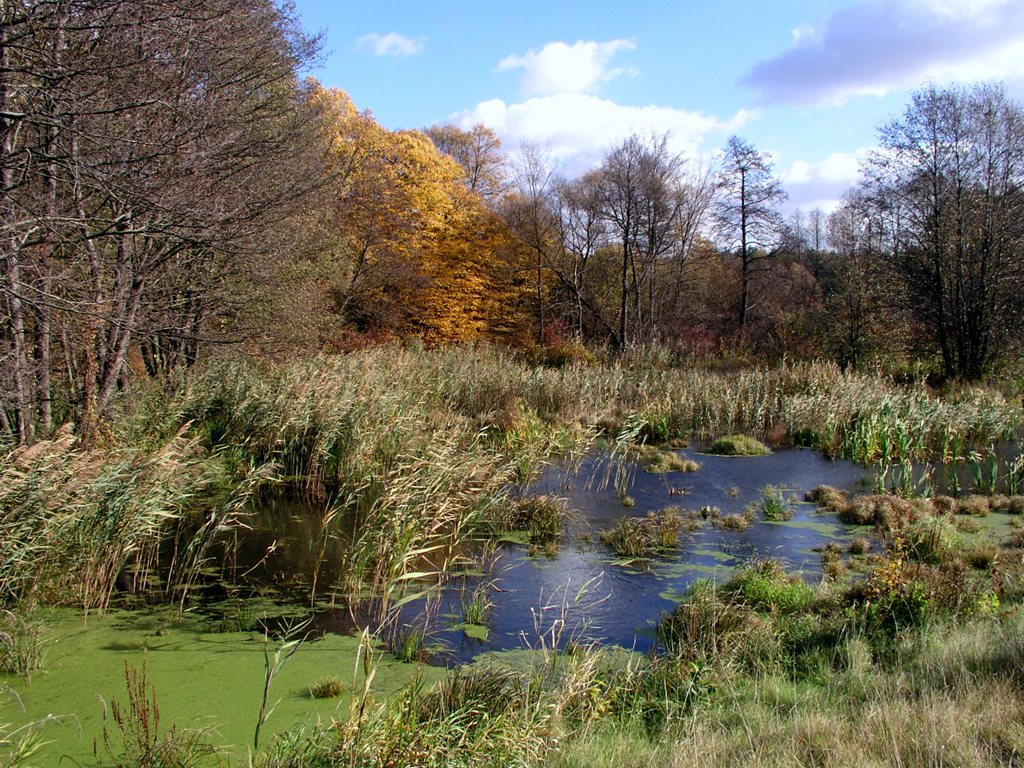

It’s a good idea to start your kayaking adventure in the Lodzkie region on the Pilica River. The river, surrounded with landscape parks — Przedbórz Lanscape Park, Sulejów Landscape Park and Spała Landscape Park — meanders picturesquely among vast meadows, forests and marshes. For family kayaking trips, we recommend the 19 km route from Tomaszów Mazowiecki, which leads through the meanders of the Spalski forest to Inowłódz. It takes about 3.5 hours and does not cause any major difficulties. You must see the Niebieskie Źródła reserve (Blue Springs), the Open-Air Museum of the Pilica River and Inowłódz, with the Romanesque church of St. Giles (12th century) and the partially reconstructed ruins of Casimir the Great's castle (14th century).The most beautiful part of the trail is the one from Inowłódz and Zakościele to Mysiakowiec. Kayaking tourism is facilitated by a well-developed accompanying infrastructure. Many rest areas have been created along the route, including in Spała, Inowłódz, Kozłowiec and Mysiakowiec. Arbors with benches and tables have been set up at boat landings, as well as racks for storing kayaks. In addition, in Spała and Inowłódz tourists can use new sanitary facilities. Investments to support kayaking tourism were also made in Łęgi and Grotowice. In the "Zacisze" Recreation Center in Spała you can spend the night here and rent a kayak.

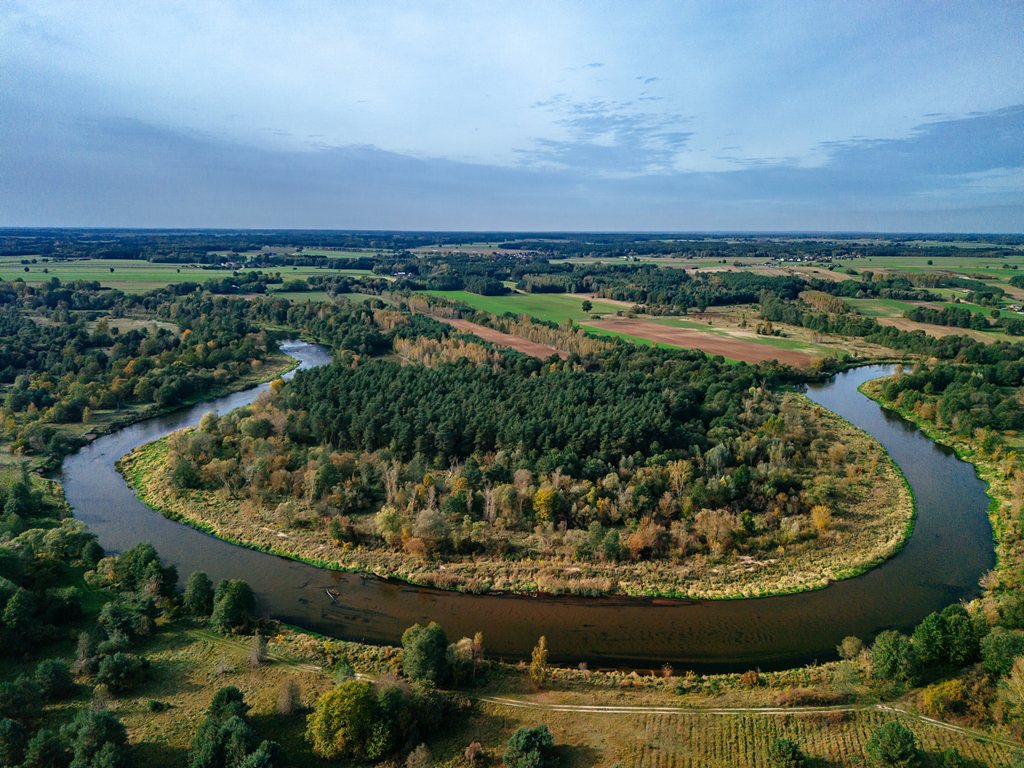
The Warta river, photograph D. Kwapisiewicz
The river can be a great idea for a pleasant relaxation away from the hustle and bustle of the city. As you float down the river, you can admire picturesque islands, meanders and oxbow lakes. There are many forests, escarpments and ravines on the shore, and the area is full of karst phenomena, such as caves, monadnocks and karst springs. The most interesting part of the trail is the one from Działoszyn to Przywóz. The route leads through the beautiful landscape of the Załęcze Meander of the Warta River, providing tourists with an extraordinary aesthetic experience. This section of the trail is 28 km of beautiful adventure, for which you will need about 5–6 hours, and with the newly developed stopping places at Lisowice and Bobrowniki, covering individual sections can be spread over the whole day. Experienced paddlers are welcome to join longer trips with overnight stays, of which there are many places in the river area. For more experienced kayakers, a great idea would be a multi-day trip with an overnight stay in Osjaków. A special event, taking place about 2 km from the Warta River, which attracts tourists from all over the world, is Corpus Christi in Spycimierz – the villagers have been creating flower carpets for over 200 years. This unique tradition was added to the UNESCO list in 2021.
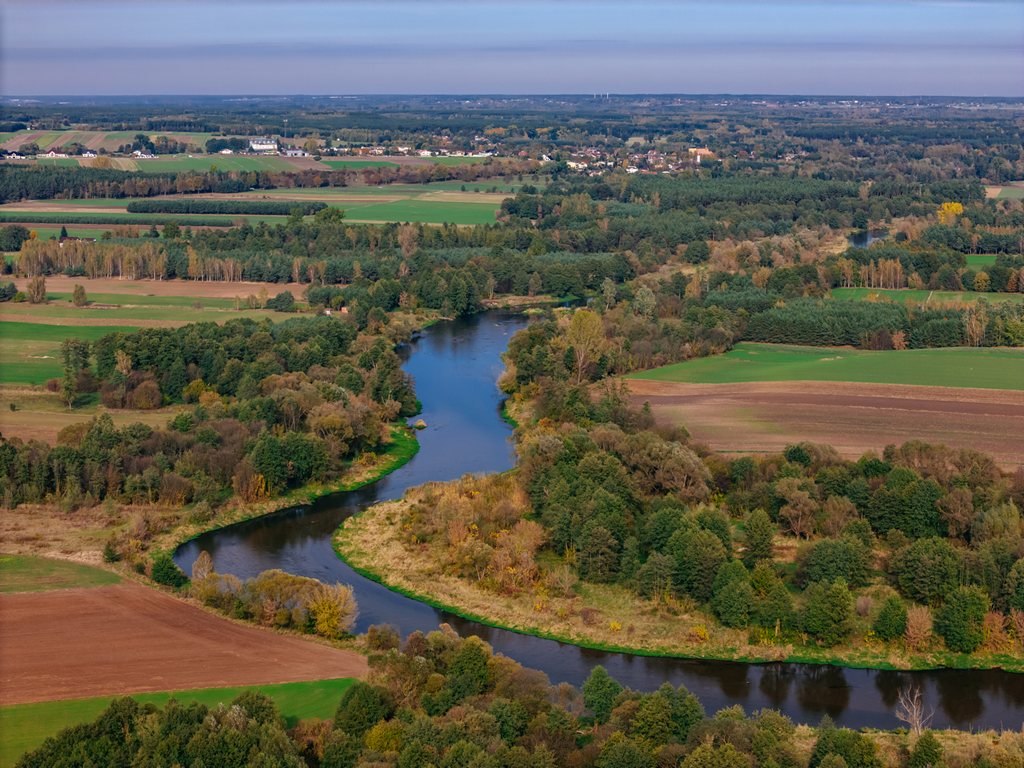
The Warta river, photograph D. Kwapisiewicz
After Pilica and Warta, we continue our trip. This time on the Bzura. It is a typical lowland river with a rather gentle current, but it is not without weirs and rapids, and in some sections there are portages or a faster current requiring more caution and attention. The rich fauna and flora attracts more and more nature and kayaking tourism enthusiasts. This has contributed to the development of the local infrastructure. The river is well signposted, and so-called floating jetties have been built in Walewice, Strugienice, Klewkowo and Kompin.
On the route of the rafting trip, we especially recommend visiting the Gothic royal castle in Łęczyca, built on the initiative of Casimir the Great, which currently houses the Museum of the Łęczyca Region. It is here that you can admire the largest collection of sculptures in Poland depicting the devil Boruta - the legendary ruler of the castle, and the castle courtyard is the setting for one of the largest knight tournaments in the country.
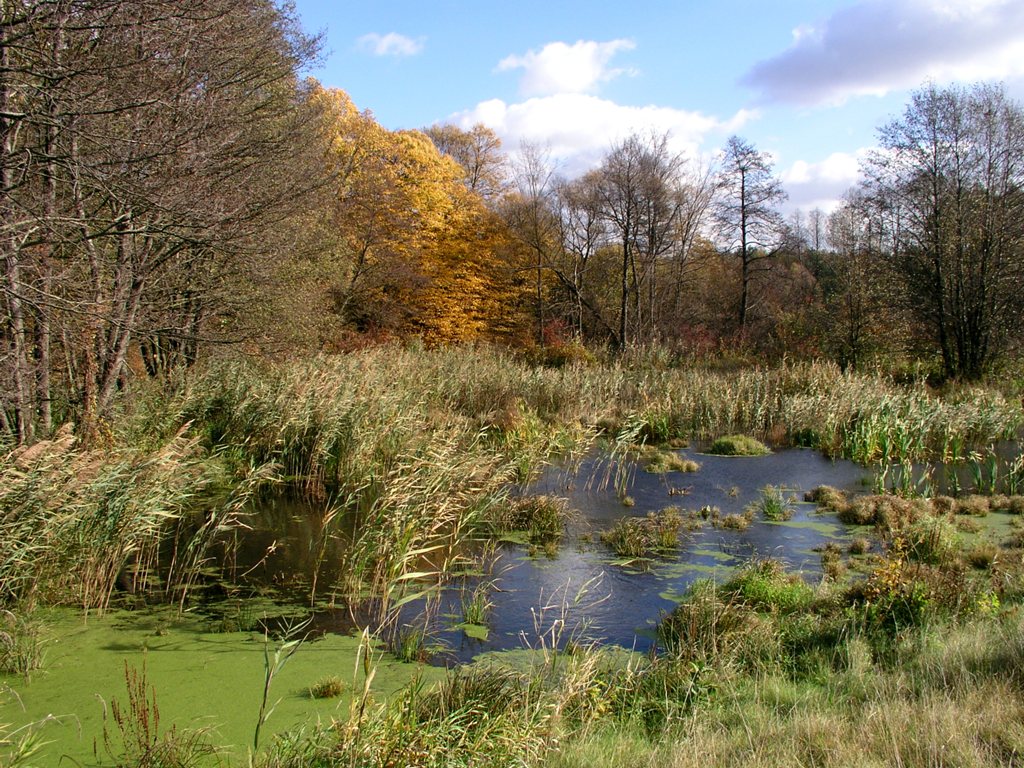
Finally, we get to a real gem, the Rawka. Its bed is unregulated and its banks are abundantly covered with lush vegetation. It presents itself best at the section of the Bolimów Landscape Park. The entire length of the river is a nature reserve, so before kayaking, remember to obtain a permit from the Regional Director of Environmental Protection by submitting an appropriate application. However, this is not a problem and the procedure takes a relatively short time. The tourist base here is well-developed but it is still worth thinking about booking kayaks in advance, especially in the summer season when the traffic is really heavy. The Rawka, due to its wild character, is a demanding river, ideal for more experienced paddlers. Fallen tree trunks necessitate numerous portages and the rapid current may even capsize the kayak. The Rawka is definitely one of the more extreme rivers, where you need to make use of your physical fitness and technical skills.
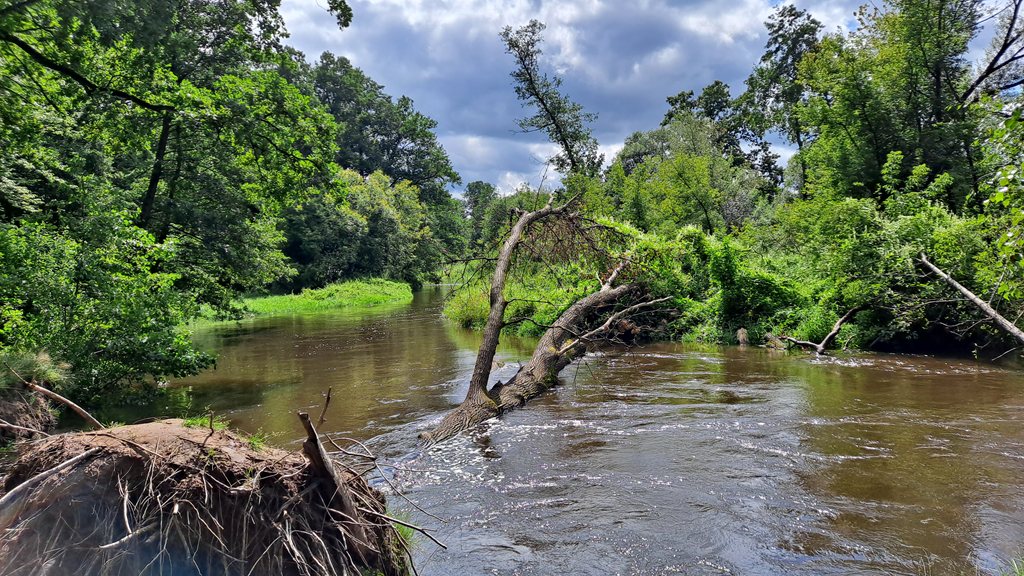
The Rawka
On the rivers of the Lodzkie region, a packraft will work just as well as a traditional kayak. This ultralight inflatable kayak is used for the increasingly fashionable packrafting and bikerafting and combines river rafting with trekking or cycling tourism. These are new forms of active tourism that will make it possible for you to explore the wildest and most inaccessible places in our region, using and combining the most beautiful tourist routes in the Lodzkie region.
Useful links:
If you want to spend pleasant time with your children, come and visit Lodzkie. The region has many attractions to offer the youngest and slightly older children. We promise good fun and no boredom!
Sightseeing Lodz you should wander across the city along two trails – one associated with cinematography, and the other with technology. As part of the first one, an obligatory point of the programme is the Film Museum housed in the former palace of the Scheibler family. The most important exhibit in the museum’s collection is the original Kaiserpanorama from the end of the 19th century, but also historical film cameras and projectors are worth seeing. The interiors themselves are impressive, especially when we remember frames from “The Promised Land” directed by Andrzej Wajda.
In the former first power plant in Łódź – EC1, there is the most modern planetarium in Poland, the National Centre for Film Culture, the Centre for Comics and Interactive Narration created by the organisers of the International Festival of Comics and Games, as well as conference rooms and halls for organising events, including the largest Art Nouveau Machine Hall (1,360 sq m).
While already in the poddębicki district, you can spend a day at the Borysew Zoo. This is an excellent attraction, especially for families with children. In addition, 100 animal species, a mini zoo, the fairytale “Figlarnia” in the spherical tents and an extensive gastronomic sphere will make your stay pleasant for hours. In 2017 the complex was awarded the Polish Tourist Organisation’s Gold Certificate for “Best Tourist Product”.
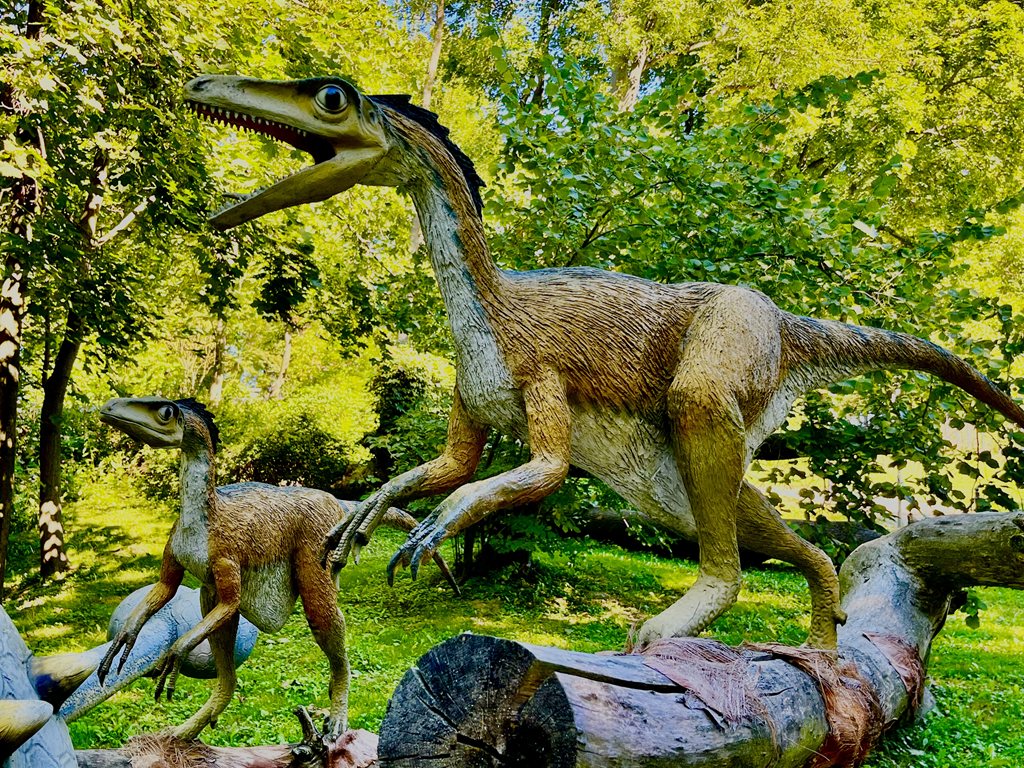
If you are looking for a dinosaur park in the Łódź province, the only one is located in Kołacinek, near Brzeziny, about 45 minutes by car from Łódź - Dinopark. There is a marked path along which you can see dinosaurs, and there are also many additional attractions: you can become a little archaeologist, visit a museum, play on the playground, ride a train or enter the "Fairytale Path".
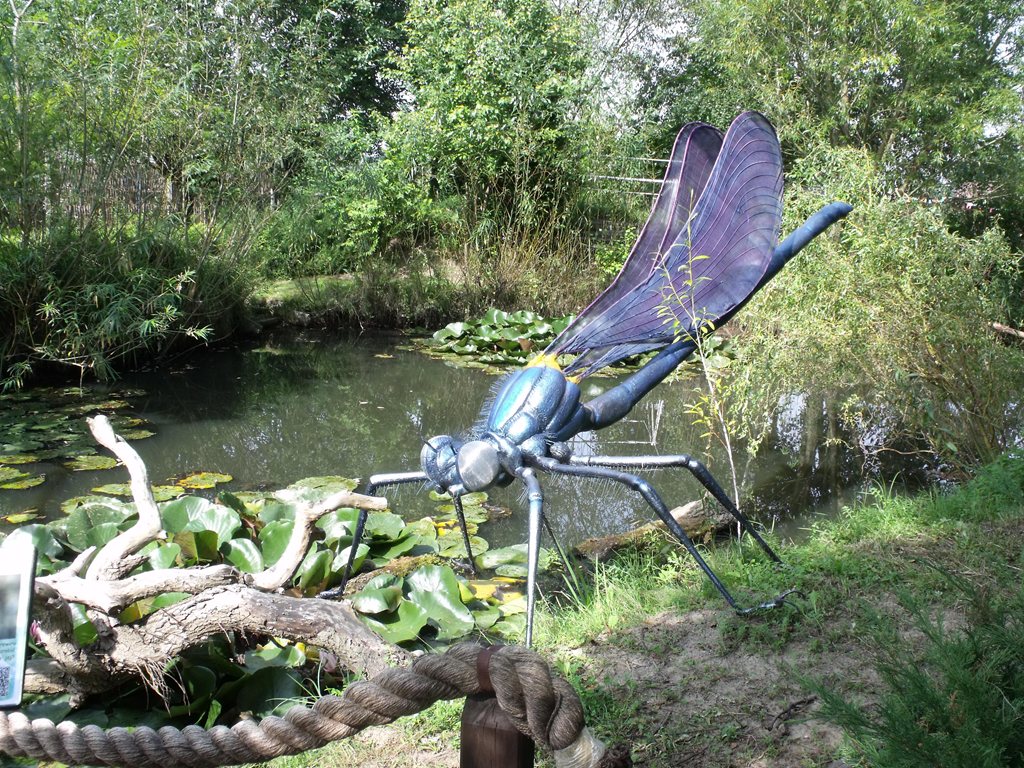
Figure 3 Mikrokosmos Park
Lodzkie offers something for fans of all kinds of bugs as well. In Ujazd, about 12 km north of Tomaszów Mazowiecki, you will find the Mikrokosmos Park - a beautiful garden enriched with large sculptures of insects. You can meet there a giant mosquito, a ladybug, a bumblebee or a bee, and at the same time learn a lot about them. You walk around the park on a marked path, you can approach individual insects and even touch them.
Sady Klemensa (Klemens’ Fruit Orchard), located between Łódź and Warsaw, about 7 kilometres east of Rawa Mazowiecka, is one of unique places in the region dedicated for a family holiday. Sady Klemensa were built on the site of former apple orchards and is a great option for a rest among greenery, enriched with a lot of attractions for children: a huge sandbox, a water park with a paddling pool, a maze, trampolines, playgrounds, inflatables, an obstacle course. Children can ride a small and slow train with a tractor, ride go-karts, visit Strachowisko or try their hand at the rope park. For parents, there are places to rest with deckchairs and hammocks.
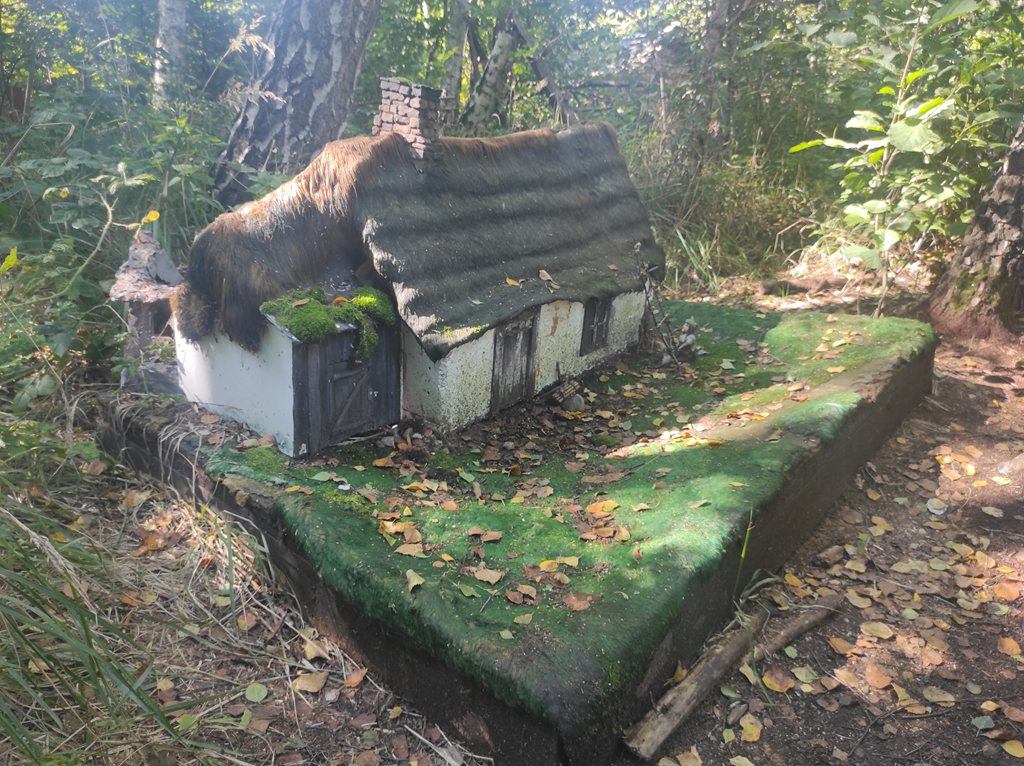
The Valley of Dwarfs
Dolina Skrzatów (The Valley of Dwarfs) in Chociszew is located about 30 km from Łódź. It is a magical place where dwarf stories and Slavic legends attracting not only the youngest, but also adult lovers of fairy tales. The tour takes place in groups, under the supervision of the Dwarf Guide, called the Skrzatologist, who knows everything about dwarfs! He knows where they hide, what secrets they have, what their lives are like. The tour includes a walk in the park and workshops.
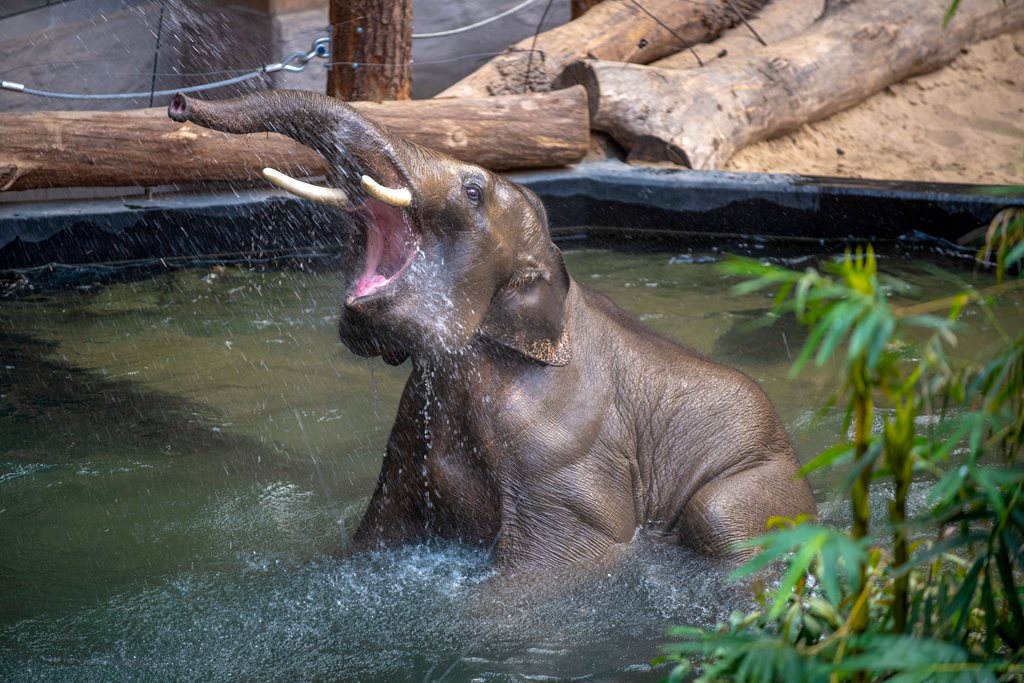
Orientarium is the most modern pavilion in Europe dedicated to the fauna and flora of Southeast Asia. The facility covers an area of 10 football fields and houses 35 species of land animals and 180 species of fish. Visitors can observe the inhabitants of the Orientarium from three perspectives: underwater, land and from above. In addition, educational classes are held during the week, during which you can see the breeding facilities, learn about the work of animal caretakers, take part in training or prepare toys.
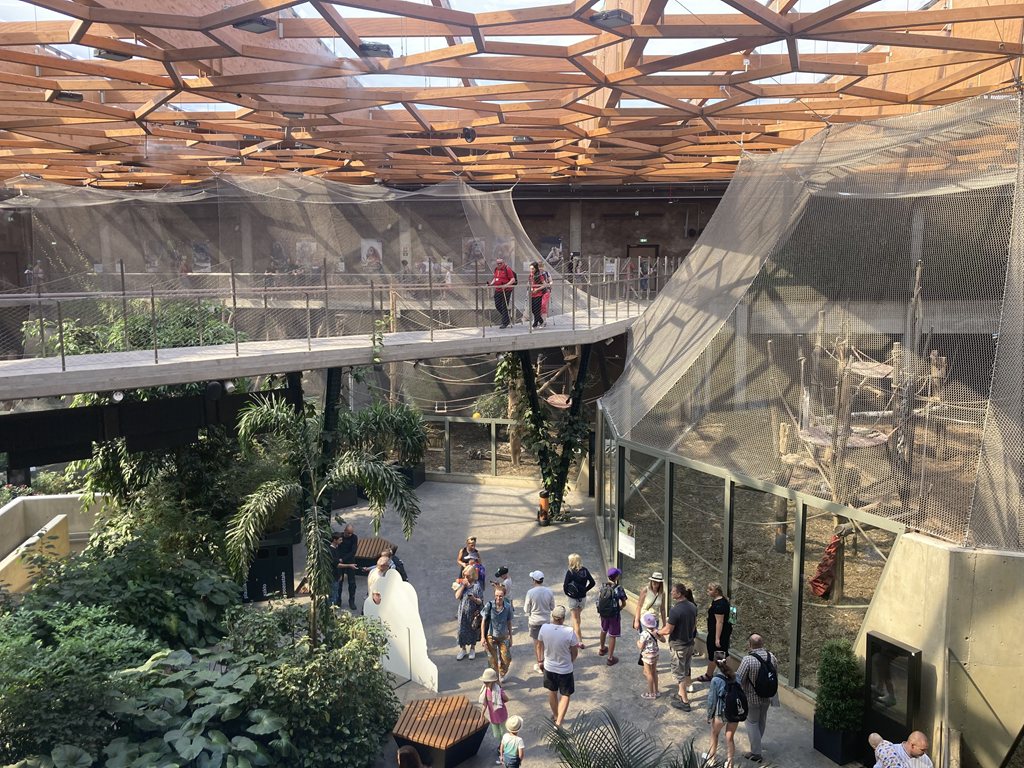

Located in Rzgów, Mandoria is the first year-round amusement park in central Poland, and at the same time the largest theme park in Europe in the form of a 15th-century trading city, located in a building. In this City of Adventures, where Renaissance Europe meets modernity, we can find both family rollercoasters and classic carousels, huge slides, a mirror maze, a shooting range, lifeboats and many more.